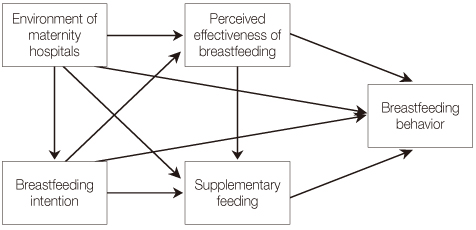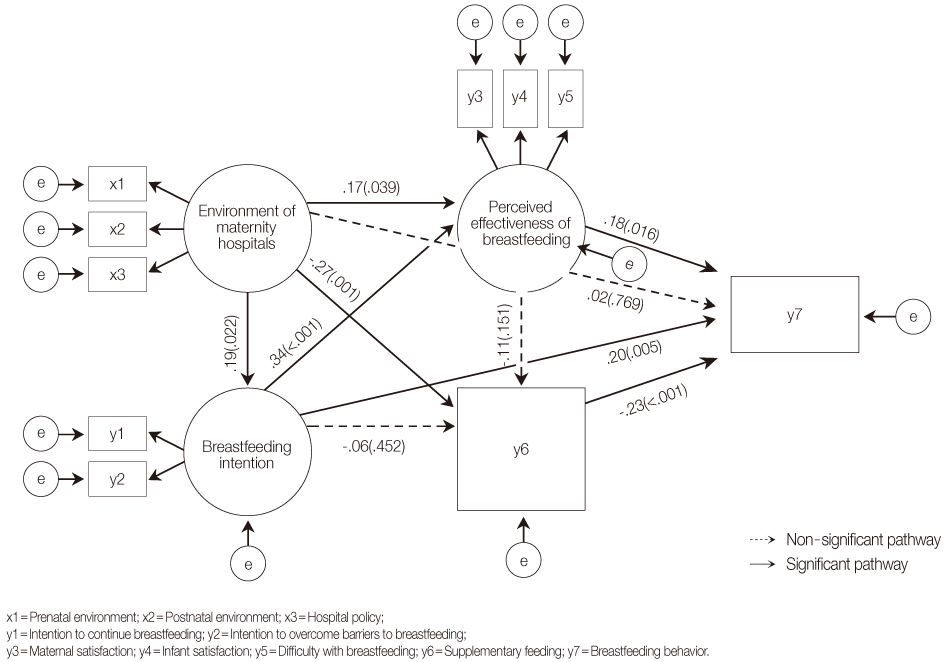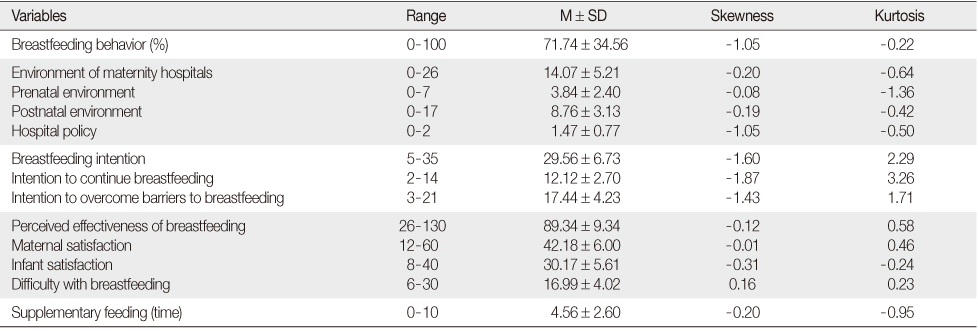Articles
- Page Path
- HOME > J Korean Acad Nurs > Volume 43(3); 2013 > Article
-
Original Article
- A Structural Model for Primiparas' Breastfeeding Behavior
- Hyun-Joo Yang, Ji-Min Seo
-
Journal of Korean Academy of Nursing 2013;43(3):399-408.
DOI: https://doi.org/10.4040/jkan.2013.43.3.399
Published online: June 28, 2013
1Department of Nursing, Kyungnam College of Information and Technology, Busan, Korea.
2College of Nursing, Pusan National University, Yangsan, Korea.
- Address reprint requests to: Seo, Ji-Min. College of Nursing, Pusan National University, Beomeo-ri, Mulgeum-eup, Yangsan-si, Gyeongsangnam-do 626-870, Korea. Tel: +82-51-510-8351, Fax: +82-51-510-8308, seojimin@pusan.ac.kr
• Received: January 8, 2013 • Accepted: April 16, 2013
© 2013 Korean Society of Nursing Science
Figure & Data
REFERENCES
Citations
Citations to this article as recorded by 

- Predictors of maternal attachment among breastfeeding mothers in Jordan
Sawsan Abuhammad
Nursing Open.2021; 8(1): 123. CrossRef - Factors associated with Maternal Attachment of Breastfeeding Mothers
Sun-Hee Kim
Child Health Nursing Research.2019; 25(1): 65. CrossRef - Impact of Parenting Stress and Husband's Support on Breastfeeding Adaptation among Breastfeeding Mothers
Seung Hui Heo, Yoon Goo Noh
Korean Journal of Women Health Nursing.2017; 23(4): 233. CrossRef - Development of a Breastfeeding Effectiveness Scale (BES)
Hyun-Joo Yang, Min-Young Jeong, Ji-Min Seo
Korean Journal of Women Health Nursing.2016; 22(4): 264. CrossRef - Comparison of Lactation Problems, Knowledge, and Adaptation on Breastfeeding between Users and Non-Users of Lactation Clinic
Myoung Hee Yun, Hye Sook Shin
Journal of East-West Nursing Research.2014; 20(2): 112. CrossRef
A Structural Model for Primiparas' Breastfeeding Behavior


Figure 1
Conceptual framework.
Figure 2
Final model with parameter estimates.
Figure 1
Figure 2
A Structural Model for Primiparas' Breastfeeding Behavior
Descriptive Statistics of Variables (N=213)
Table 1
Descriptive Statistics of Variables (N=213)
 KSNS
KSNS
 E-SUBMISSION
E-SUBMISSION



 Cite
Cite

